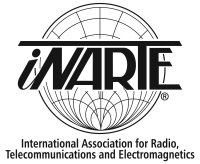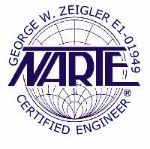Information Technology Equipment (ITE) Maintenance Awareness (Part 3)
Spare parts
Spare parts have always been and will probably always be a very capricious topic with accountants and budget planners. Spare parts are just a cost burden on a system until they are necessary.
The Maintenance Manager must place the storage and continued maintenance of spare parts at the top of the priority list to maintain a reliable ITE system.
A carefully selected assortment of spare parts is critical to a good maintenance plan and provides insurance against prolonged downtime. Although repairs cannot be carried out on site, maintaining an adequate stock of spare parts will help to avoid delays in getting the machine back into service. Overstorage and understorage must be avoided. Overstorage entails excessive transportation costs as well as losses due to obsolescence when the equipment is replaced. Under-supply puts the system at risk in the event of a breakdown. Very often, replacement parts for one machine can be used on many other units in the same area. In such cases it is imprudent to store spare parts for each unit alone, but to follow the manufacturer's recommendations concerning the minimum permitted for a group of equipment.
When making the decision to stock spare parts, keep in mind the objectives of the maintenance plan. If there is any uncertainty as to the type and variety of spare parts to be stocked, the original equipment manufacturer should be consulted.
Continuous inspection program
Equipment in an electrical system is susceptible to failure for a multitude of reasons. Such failures may occur for no apparent reason or the cause of the failure may be evident.
The failure of the electrical equipment should be analysed to determine the reasons for its failure. Unless the cause is clear, the quality of the equipment is questionable. Reliability can be built into the equipment, but it requires maintenance to retain it. The tendency to ignore regular maintenance and testing generally prevails over regular maintenance because regular maintenance may be considered unnecessary and too expensive. Therefore, the best designed and built equipment can break down through lack of attention. Each failure should be analyzed to determine its cause so that corrective actions can be implemented to prevent similar failures.
A well-managed maintenance plan will include a continuous inspection program to monitor equipment. The primary objective of the on-going inspection will be to avoid unexpected stops and downtime. Any equipment failures should also be investigated and included in a continuous inspection program. The root cause of equipment failure can be readily determined if analyzed soon after the failure. Where the root cause is never identified, the problem is more likely to return at a later date.
The significance of an ongoing inspection program will be determined based on the critical nature of the ITE product. The inspection program may be limited to taking daily load readings, or it may include sophisticated computer monitoring of load, heat and vibration sensors to name only a few.
Maintenance schedule
The objective of the maintenance schedule is to determine the condition of the equipment and the work that will be required before its next scheduled maintenance. Manufacturers' service manuals usually specify the recommended maintenance and/or inspection frequency. These time frames are based on standard operating conditions and environments. If those standard conditions change in the equipment, the frequency should be adjusted accordingly. However, once the scheduled maintenance frequency is determined, this schedule should be followed for at least several maintenance cycles.
The schedule must be adjusted if unexpected equipment failures occur. The frequency can be reduced to 50 per cent. If the equipment requires no maintenance for more than two inspections, the frequency period for this equipment may be increased by up to 50 per cent. The adjustment should be continued until the optimal range is found. In general, the frequency of tests may vary between 6 months and 3 years.
An efficient maintenance department will plan ahead for work that cannot be completed during plant operation. Time must be allowed to do a good job, or the quality of the maintenance plan and the equipment will eventually be affected. However, sufficient time needs to be provided for proper maintenance. If more work is scheduled than can be done during a shutdown, the equipment will be returned to service and certain maintenance tasks will not be completed. The net result is that the job card will indicate that maintenance has been completed, but in reality some operations will be missed and not reported. This means that these operations will not be completed until the device is scheduled for future maintenance.
If components fail more frequently than in the past, the equipment may have to withstand additional loads for extended periods of time, or a single shift now operates day and night. This will expedite maintenance needs and modify the maintenance schedule. For instance, a reduction in the life expectancy of disposable items such as contacts can only occur due to a greater number of operations or additional load requirements.
The following guidelines provide a means by which an effective maintenance plan can be planned.
- Set maintenance service objectives.
- Plan your maintenance plan beforehand.
- Train employees in technical areas as required.
- Create a data file on every piece of equipment and keep it up to date.
- Complete all maintenance as specified in the original schedule.
- Hire a manufacturer's representative if needed and allow time for the representative to be on site for maintenance.
Maintenance tests
Field tests are conducted to see if the newly installed equipment has been damaged, to indicate whether corrective maintenance or replacement is necessary. For existing equipment, the field test should indicate whether the equipment can continue to carry out its design functions safely and appropriately. Field testing can describe the progressive deterioration of the equipment over its service life and verify the new equipment before it is energized. The types of tests are acceptance tests, routine maintenance tests and special maintenance tests which are performed for specific purposes. Commissioning the electrical system on new projects (equipment) is critical to ensure that a system is installed correctly and will operate as intended. Commissioning of a system includes individual testing of the associated components, verification of the interconnection of the components to the drawings, and functional testing of the system as a whole.
Acceptance tests are called validation tests and are performed on new equipment, usually after installation and prior to energization. They are performed to determine what follows.
- Whether the equipment meets specifications.
- Develop a baseline for future testing.
- Verify that all equipment has been installed without damage.
- Verify that the equipment is within its design intent and limits.
Maintenance tests are carried out at regular intervals during the lifetime of the equipment. They are done concurrently with preventive maintenance. In the course of routine maintenance tests, it is very helpful to record the information as it is found on the equipment and to also record the condition in which the equipment is left. Those tests can therefore be subdivided as follows.
- The tests as found are performed on the equipment upon acceptance or after it has been put out of service for maintenance, but before any maintenance work is done.
- The As-left tests are performed after maintenance and just before re-energizing. They can indicate the degree of equipment improvement and provide a point of comparison for future testing.
- Special maintenance tests shall be carried out on equipment which is known to be defective or which has been subjected to unfavourable conditions likely to affect their operational characteristics. An example could be interrupting a circuit breaker that requires inspection, maintenance and testing before it can be brought back into service.
The final technical function of developing a maintenance and test program is to establish instructions, procedures and methods to ensure that the equipment and components of the system are operating without failure. The maintenance department should have full procedures and instructions for thorough servicing of all equipment and components. In addition, maintenance should develop shutdown procedures, safeguards, locking of equipment, alarms, and methods for recording data and reporting unusual conditions to the competent authority. Maintenance records should be used more extensively to evaluate results and as an indicator of possible changes or changes to the maintenance plan. In other words, the recorded information should be used as historical data and for feedback in order to change the serv
« Back to Blog






Comments